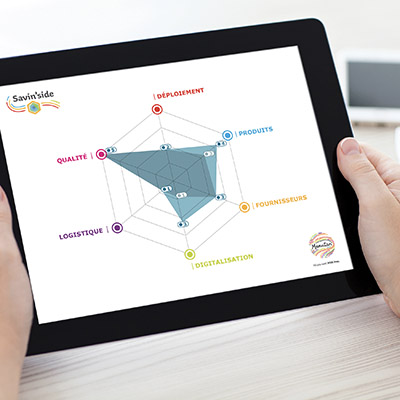In a world undergoing digital revolution, businesses have no choice but to initiate or accelerate their digital transformation. It’s an essential condition for improving efficiency, staying competitive, and preparing for the future. This dynamic necessarily involves the digitalisation of procurement processes through dedicated solutions. The electronic catalogue is among these procurement techniques that have become indispensable for any organisation.
What is an electronic catalogue?
As part of the digitalisation of corporate procurement processes, one of the first steps involves dematerialising access to the negotiated product offering proposed by suppliers. This entails implementing an electronic catalogue, which remains the most widely used tool to achieve this.
Electronic catalogues are an integral part of companies’ Procure-to-Pay (P2P) systems. You know, those integrated solutions that handle the entire procurement process, from product and/or service requests to supplier payment. These are accessible directly from the search engine of said solution.
In practical terms, these tools integrate product descriptions (price, dimensions, technical data, manufacturers…) and contractual conditions (discounts, product exclusions, shipping costs…). In this sense, they guarantee an exchange of validated, reliable, and personalised product data between a company and its supplier.
Thanks to electronic catalogues, placing an order is orchestrated in two main steps. First, customers can choose their products and create a cart, which becomes a procurement request. Then, this is automatically integrated into the company’s information system (IS) and follows the validation workflow predefined by the procurement team before turning into a purchase order.
Two main types of electronic catalogues
Two main types of electronic catalogues coexist in the procurement world: The hosted catalogue, also known as e-cat, and the Punch-Out solution.
The hosted catalogue or e-cat
The hosted catalogue gives companies the ability to access a static and defined offering, ensuring the stability of negotiated prices. It is archived in the client’s e-procurement solution or that of their service provider (marketplaces). This catalogue type is particularly suited to managing a small quantity of products that are ordered recurrently.
However, it reaches its limits in managing very broad product offerings. The static nature of these catalogues makes their maintenance particularly complex. This is especially true when they cover several thousand products! Yet, updating data is essential, as it helps avoid ordering unavailable or delisted products. New products, range extensions, and dynamic proposals are also not integrated. Lastly, customers don’t have access to real-time stock levels and thus delivery times.
The Punch-Out solution
Jérémie Chauvin, E-procurement Project Manager Europe at Manutan, explains: "Punch-Out is a digital solution enabling users to access a dynamic and real-time offering from their supplier, directly from their procurement system. Via the Punch-Out solutions, users can access a dynamic offering featuring new products, configurators, stock levels… all this under their contractual conditions in terms of price and exclusion." Some Punch-Out solutions also give access to all technical documentation related to the transaction such as the order, delivery note, invoice, and various delivery stages (track & trace).
This tool is more suited to managing a large quantity of products, ordered sporadically. This applies particularly to indirect procurement.
This type of catalogue is available through an interface between the company’s Procure-to-Pay solution and its supplier’s information system. This offers precise visibility on consumption. Procurement teams are notably able to monitor spending variation in real time.
Each solution has its advantages and disadvantages, depending on the procurement categories concerned. It’s up to the teams to choose the tool best suited to their needs and mode of operation.
What are the advantages for the procurement function?
Implementing electronic catalogues within your company presents multiple advantages, which help strengthen the strategic positioning of procurement departments.
Improving efficiency
Firstly, procurement teams, as well as internal customers, save considerable time by having access to lists of approved products, provided by listed suppliers, under negotiated conditions. This improved administrative management invariably translates into indirect cost savings. Each stakeholder can then focus on the essentials, analysing more precisely the products and services they wish to procure, through their procurement criteria.
Ensuring better compliance
The electronic catalogue also promotes adherence to the established procurement policy and thus avoids the proliferation of maverick spend. The various internal stakeholders have access to everything they need to proceed with necessary purchases, according to defined processes. However, this implies having chosen the right electronic catalogue, but also having raised awareness among everyone about its use.
Initiating digitalisation
Lastly, adopting an electronic catalogue is a first step towards the digitalisation of procurement. This then paves the way for the orders and invoices dematerialisation. From then on, a whole range of steps become automated:
- Integration of procurement requests;
- Validation workflow;
- Sending of orders;
- Matching of orders and invoices…
Whether it’s a Punch-Out solution or a hosted catalogue, electronic catalogues enable companies to access a product offering that meets their needs, proposed by listed suppliers under negotiated contractual conditions.
They therefore constitute an essential tool for maximising the companies’ procurement potential. By adopting such a procurement software solution, they can improve their operational efficiency to give more weight to their procurement policy, increase sales and initiate the digitalisation of the procurement function.





_1110x555.jpeg)



